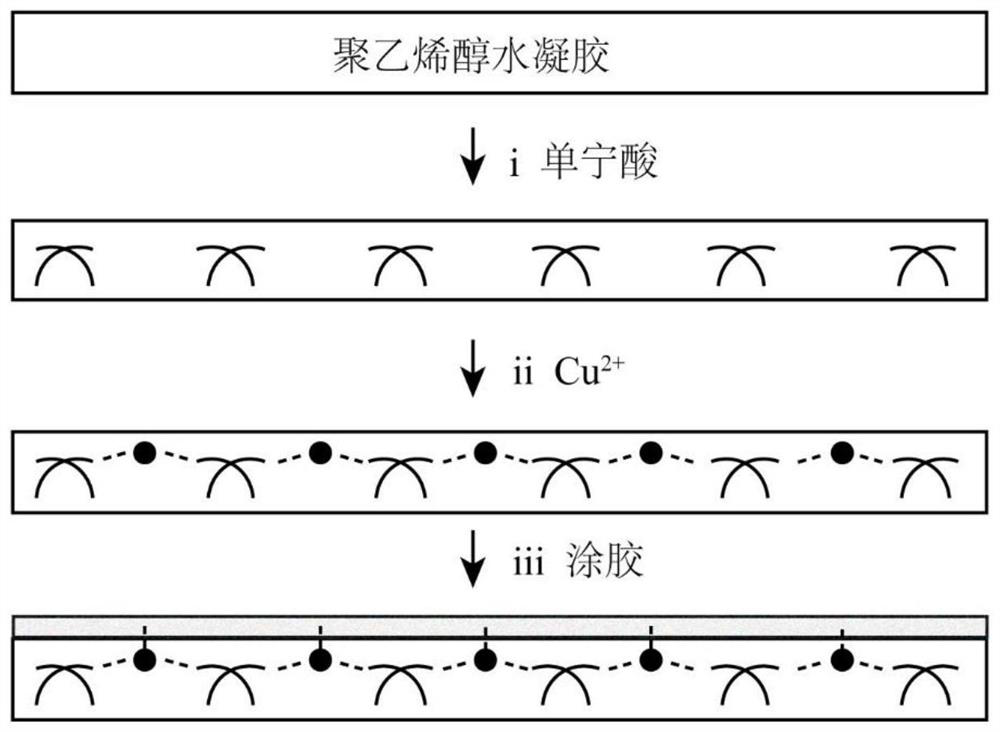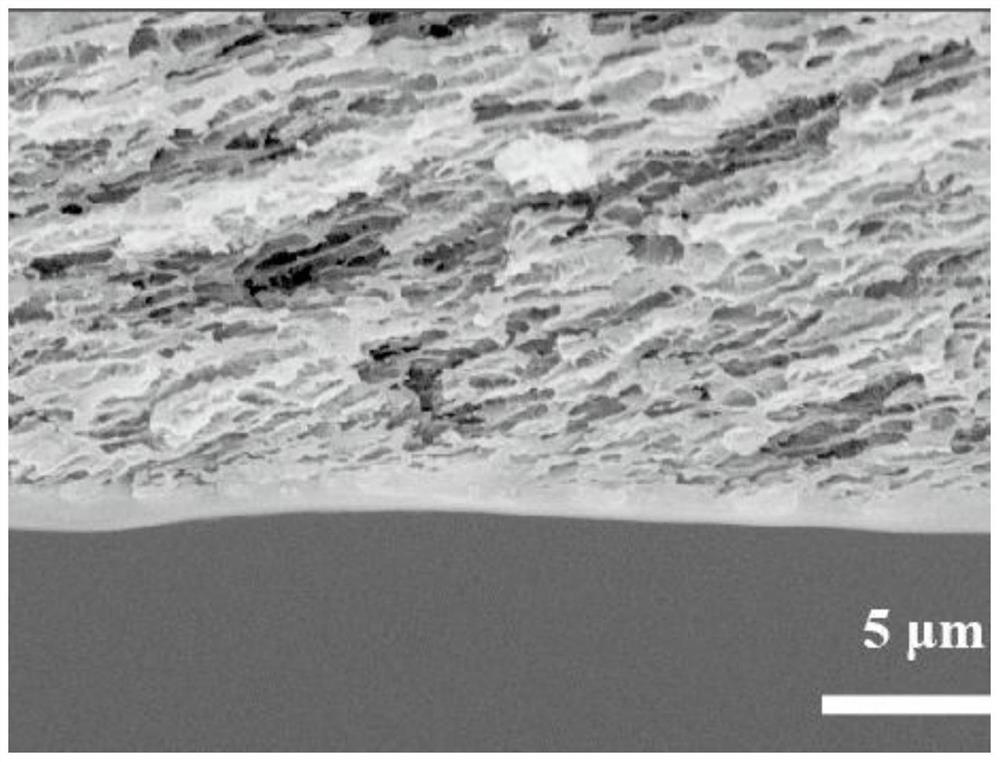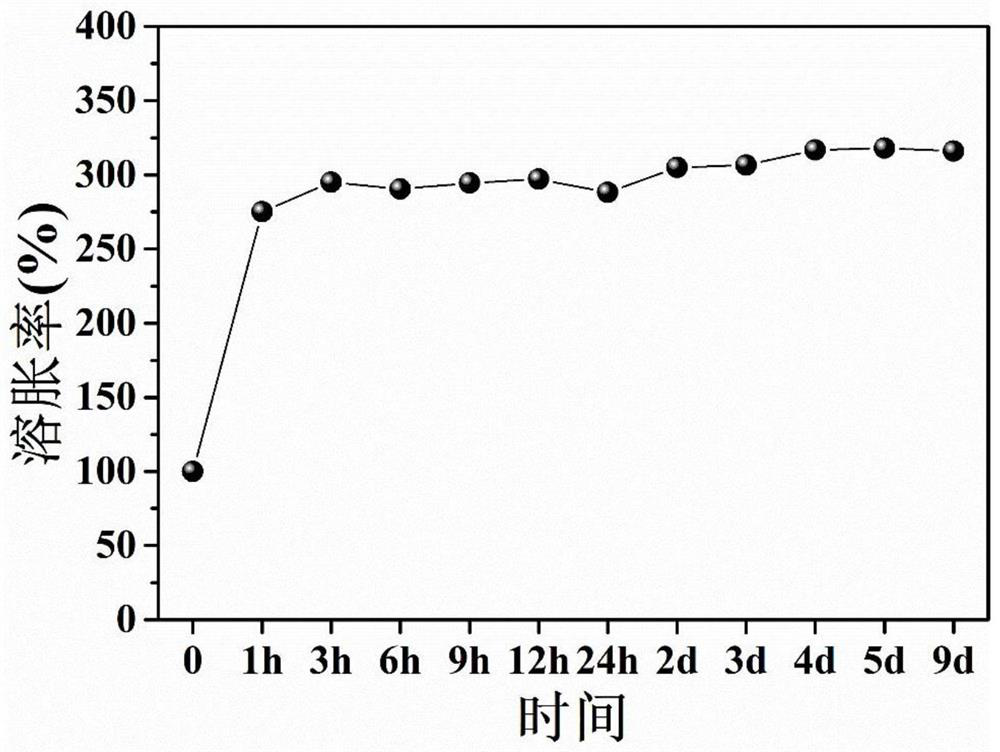Transparent antifouling patch as well as preparation method and application thereof
An anti-fouling and patch technology, applied in the direction of film/sheet adhesive, adhesive type, amide/imide polymer adhesive, etc., can solve the problem of poor light transmission of hydrogel question
- Summary
- Abstract
- Description
- Claims
- Application Information
AI Technical Summary
Problems solved by technology
Method used
Image
Examples
preparation example Construction
[0030] The invention provides a method for preparing a transparent antifouling patch, comprising the following steps;
[0031] Mix polyvinyl alcohol, water and glycerin and freeze to obtain a hydrogel;
[0032] Mixing the hydrogel with a tannic acid solution for pretreatment to obtain a pretreated hydrogel;
[0033] The pretreated hydrogel was treated with soluble Cu 2+ Salt solution treatment to obtain a hydrogel substrate;
[0034] mixing dopamine methacrylamide and hydrophobic monomers for free radical polymerization to obtain adhesives containing phenolic hydroxyl groups, the hydrophobic monomers being methoxyethyl acrylate or methyl methacrylate;
[0035] Mixing the adhesive glue containing phenolic hydroxyl groups with an organic solvent to obtain an adhesive glue solution;
[0036] Coating the adhesive glue solution on one side of the hydrogel base to obtain the transparent antifouling patch.
[0037] The invention mixes polyvinyl alcohol, water and glycerin and fre...
Embodiment 1
[0067] Weigh 10 parts of polyvinyl alcohol (the average degree of polymerization is 1750), 40 parts of glycerin, and 50 parts of deionized water are placed in a flask, and heated to reflux to dissolve the PVA. Then pour the obtained solution between the glass templates, the gap height is 0.36mm, put it into the environment of -30°C and freeze it, take it out after standing for 12 hours, and then freeze it after thawing at room temperature (-30°C, 12 hours) , to obtain polyvinyl alcohol hydrogel.
[0068] A 1% tannic acid solution was prepared, and the obtained hydrogel was soaked in the tannic acid solution for 1 hour. Configure 0.1mol / L CuCl 2 solution, the hydrogel treated with tannic acid was put into CuCl 2 solution, soak for 5min. 7.5g of methoxyethyl acrylate, 1.7g of dopamine methacrylamide and 106mg of azobisisobutyronitrile were added to 20mL of dimethylformamide for radical polymerization at 70°C to obtain an adhesive glue. The adhesive glue was dissolved in dich...
Embodiment 2
[0070] Weigh 10 parts of polyvinyl alcohol (average degree of polymerization: 1750), 50 parts of glycerin, and 40 parts of deionized water into a flask, set up a reflux condensation device, and heat to 135°C to dissolve PVA. Then pour the obtained solution between the glass templates, the gap height is 0.36mm, put it into the environment of -30°C and freeze it, take it out after standing for 12 hours, and then freeze it after thawing at room temperature (-30°C, 12 hours) , to obtain polyvinyl alcohol hydrogel.
[0071] A 1% tannic acid solution was prepared, and the obtained hydrogel was soaked in the tannic acid solution for 1 hour. Configure 0.1mol / L CuCl 2 solution, the hydrogel treated with tannic acid was put into CuCl 2 Solution, soak for 1h. 7.5g of methoxyethyl acrylate, 1.7g of dopamine methacrylamide and 106mg of azobisisobutyronitrile were added to 20mL of dimethylformamide for radical polymerization at 70°C to obtain an adhesive glue. The adhesive glue is disso...
PUM
| Property | Measurement | Unit |
|---|---|---|
| Thickness | aaaaa | aaaaa |
Abstract
Description
Claims
Application Information
 Login to View More
Login to View More - R&D
- Intellectual Property
- Life Sciences
- Materials
- Tech Scout
- Unparalleled Data Quality
- Higher Quality Content
- 60% Fewer Hallucinations
Browse by: Latest US Patents, China's latest patents, Technical Efficacy Thesaurus, Application Domain, Technology Topic, Popular Technical Reports.
© 2025 PatSnap. All rights reserved.Legal|Privacy policy|Modern Slavery Act Transparency Statement|Sitemap|About US| Contact US: help@patsnap.com



